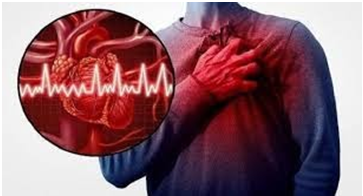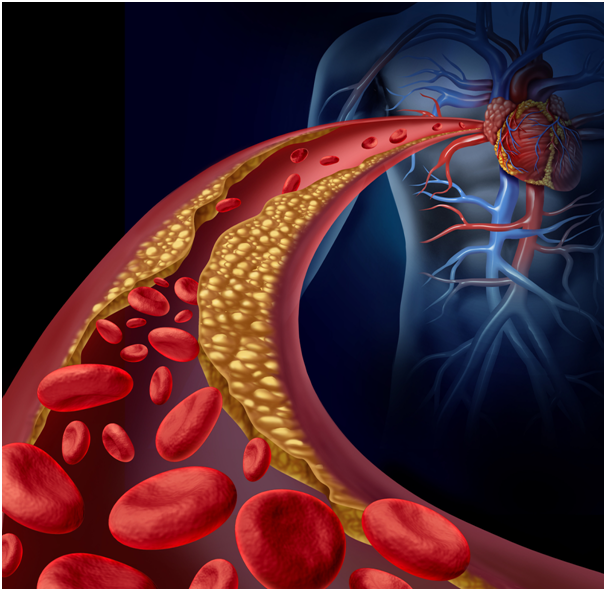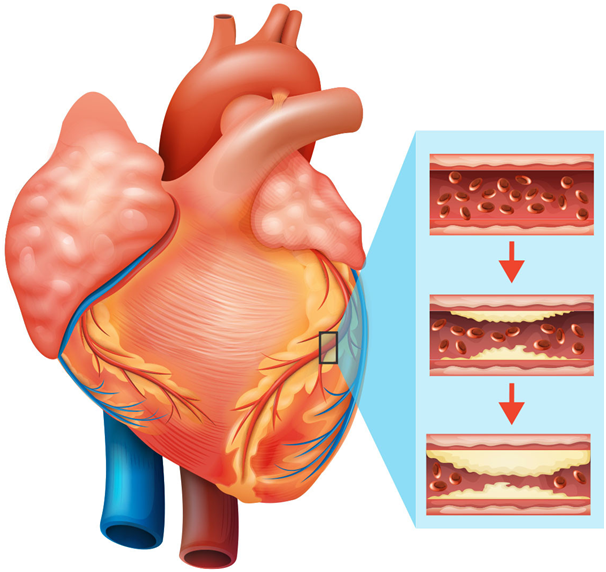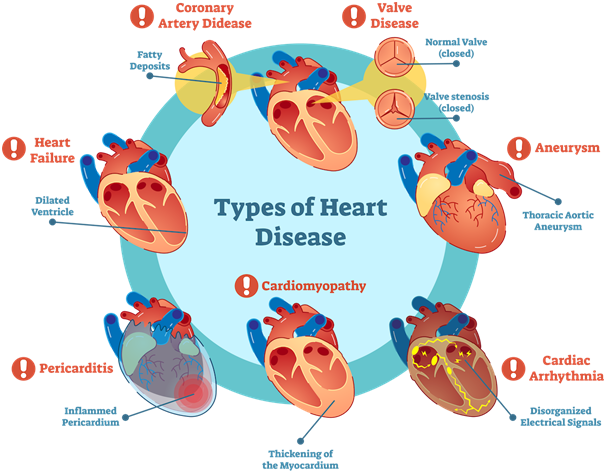What are Cardiovascular Diseases?

Cardiovascular diseases (CVDs) are a group of disorders of the heart and blood vessels. They include:
- Coronary heart disease – a disease of the blood vessels supplying blood to the heart muscle;
- Cerebrovascular disease – a disease of the blood vessels supplying blood to the brain;
- Peripheral arterial disease – a disease of blood vessels supplying blood to the arms and legs;
- Rheumatic heart disease – damage to the heart muscle and heart valves from rheumatic fever, caused by streptococcal bacteria;
- Congenital heart disease – birth defects that affect the normal development and functioning of the heart caused by malformations of the heart structure from birth; and
- Deep vein thrombosis and pulmonary embolism – blood clots in the leg veins, which can dislodge and move to the heart and lungs.
What causes CVD?

The most common cause for CVDs is the build-up of fatty deposits on the inner walls of the blood vessels that supply the heart or brain.
Hypertension, Raised blood glucose, raised blood lipids (Hyperlipidemia) and obesity may lead to Heart attacks or strokes which are the primary events of CVDs..
Heart attacks and strokes are usually acute events and are mainly caused by a blockage that prevents blood from flowing to the heart or brain.
What are the risk factors for cardiovascular disease?

The most important behavioural risk factors of heart disease and stroke are unhealthy diet, physical inactivity, tobacco use and harmful use of alcohol. The effects of behavioural risk factors may show up in individuals as raised blood pressure, raised blood glucose, raised blood lipids, and overweight and obesity. These “intermediate risk factors” can be measured in primary care facilities and indicate an increased risk of heart attack, stroke, heart failure and other complications.
Drug treatment of hypertension, diabetes and high blood lipids are necessary to reduce cardiovascular risk and prevent heart attacks and strokes among people with these conditions.
Common Symptoms of CVDs?
- Pain/discomfort in the centre of the chest, arms, the left shoulder, elbows, jaw, or back.
- Difficulty in breathing or shortness of breath; nausea or vomiting; light-headedness or faintness; a cold sweat; and turning pale
- Numbness of the face, arm, or leg, especially on one side of the body;
- Confusion, difficulty in speaking or understanding speech;
- Difficulty in seeing with one or both eyes;
- Difficulty in walking, dizziness and/or loss of balance or coordination;
- Severe headache with no known cause; and/or
- Fainting or unconsciousness.
People experiencing these symptoms should seek medical care immediately.
Treatment & Management of CVD
An acute event such as a heart attack or stroke should be promptly managed with the following medications
- aspirin;
- beta-blockers;
- angiotensin-converting enzyme inhibitors; and
- statins.
Sometimes, surgical operations are required to treat CVDs. They include:
- coronary artery bypass;
- balloon angioplasty (where a small balloon-like device is threaded through an artery to open the blockage);
- valve repair and replacement;
- heart transplantation; and
- artificial heart operations.
Medical devices are required to treat some CVDs. Such devices include pacemakers, prosthetic valves, and patches for closing holes in the heart.

Source: World Health Organization